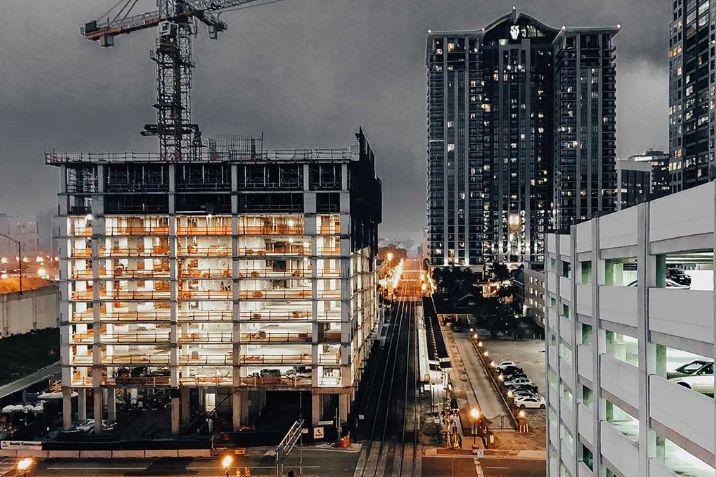Modern commercial construction is in the midst of a dynamic transformation. Gone are the days when projects followed rigid templates or prioritized size over substance. Businesses now demand versatility, leaner footprints, and spaces that can grow or contract along with changing needs. Across the industry, there is a precise movement toward maximizing space utilization, supporting user amenities, and reducing energy consumption wherever possible. This is especially true for growing markets working with partners skilled in Orlando commercial construction, where efficiency and planning are not just value-adds, but project essentials.
Open-concept layouts, demountable walls, and adaptive infrastructure make reconfiguration possible with minimal disruption. Organizations can pivot their layouts practically overnight—a key advantage in today’s fluctuating economic landscape. Influential studies, including The State of Workplace Design 2023, underscore how embracing efficient, employee-centric layouts can boost productivity, increase job satisfaction, and attract top talent. For forward-thinking developers, efficient design is less about ticking boxes and more about crafting spaces where people want to be—and where businesses can thrive long-term.
Sustainability at the Core of New Projects
Sustainability today drives not just a building’s design, but its social and economic impact. Developers and contractors prioritize environmentally friendly building materials, advanced insulation, on-site renewables, and energy recovery systems. These efforts aren’t only motivated by stricter building codes or LEED certifications but also by real demand from health-conscious tenants and eco-aware investors.
Utility costs are a top concern for building owners, and sustainable design directly addresses this pain point. Recent Environmental Protection Agency data shows that energy-efficient structures can slash annual energy expenses by up to 30%, providing meaningful, recurring savings. Sustainable features like green roofs, water reclamation systems, and solar panels raise property values and help properties stand out in competitive commercial leasing markets. The marketplace favors projects demonstrating a commitment to sustainability and a clear financial return, motivating more businesses to invest in green construction as their default strategy.
Smart Buildings: Integrating Technology Into Construction
Technology has become the backbone of modern commercial buildings. Smart sensors track occupancy in real time, adjusting HVAC and lighting systems to save energy and improve comfort. Touchless access, security cameras with AI-driven analytics, and mobile management dashboards empower property managers to boost efficiency and respond to issues faster. The presence of advanced building technology is often viewed as a marker of quality and innovation in today’s leasing market.
Projects become safer and more predictable as construction teams deploy more systems powered by artificial intelligence and data analytics. In-depth features—like those in How Artificial Intelligence Is Transforming Construction—highlight how AI optimizes scheduling, improves building performance, and lowers lifetime operational costs. Innovative technologies aren’t just about convenience; they’re reshaping what tenants expect from their workspaces and enabling property owners to adapt quickly to shifts in demand or regulations.
The Rise of Collaborative Project Delivery Methods
Modern construction is as much about teamwork as it is about engineering. Integrated project delivery methods are removing barriers between design and construction, fostering genuine partnerships between architects, engineers, contractors, and clients. With everyone aligned early on, projects are better positioned to address potential challenges, streamline approvals, and avoid the costly change orders that come with miscommunication or siloed management.
This collaborative spirit encourages shared innovation and accountability, leading to better solutions, fewer delays, and improved quality. Design-build and IPD approaches have been credited with reducing project schedules by weeks or months, offering tangible value to owners who need to get to market quickly. These methods have quickly become the gold standard for complex developments, particularly those with tight deadlines or unique mission-critical requirements.
Innovative Materials Transforming Construction
The emergence of new materials is helping commercial projects meet the demands of durability, sustainability, and economic sense. Cross-laminated timber, for example, has captured attention as a renewable substitute for steel and concrete, reducing a building’s carbon footprint while supporting longer spans and innovative structural forms. Meanwhile, self-healing concrete and recycled steel are pushing the boundaries of longevity and reducing maintenance costs over a building’s life cycle.
These innovations are more than technical progress; they help developers satisfy stricter sustainability mandates and respond to consumer demand for climate-resilient buildings. Adopting advanced materials supports LEED and WELL certifications and builds brand equity for landlords and developers who position themselves as sustainability leaders. Progressive builders are watching closely as the market continues rewarding innovation in product selection and implementation.
Prioritizing Flexibility in Commercial Spaces
Few trends have influenced contemporary commercial design as much as the need for agility. Owners demand layouts that accommodate evolving business models or an entirely new tenant. Flexible features—such as modular partitions, raised flooring for easy cable management, and multi-use gathering spaces—allow property investments to remain relevant for years, even as tenant needs shift dramatically.
Adaptable configurations safeguard against costly and time-consuming renovations, minimize vacancy downtime, and maximize a building’s lifetime value. Modular builds are increasingly common in offices and retail, while moveable wall systems are standard in spec suites for new high-rises. For tenants, flexibility means personalizing space, supporting hybrid work, and reacting confidently to workforce or economic changes.
Trends in Wellness and Employee Comfort
Employers and landlords alike have realized that people perform best in spaces designed with wellness in mind. Features such as outdoor terraces, integrated greenery, and abundant sunlight do more than please the eye; they promote physical health and boost morale. Enhanced air quality, noise control, and ergonomic design help reduce fatigue, absenteeism, and stress, delivering nothing less than a competitive advantage for forward-thinking businesses.
The WELL Building Standard, which validates buildings for attributes that support human health, is gaining widespread momentum. Companies investing in wellness-oriented spaces find it easier to attract and keep top-tier talent, reduce healthcare costs, and even enhance productivity. Developers are recognizing—and acting on—the direct link between environment and performance, meaning that wellness will likely remain at the heart of commercial development for years.
Balancing Cost, Speed, and Quality in Modern Builds
The pressure to keep budgets in check and move projects quickly while maintaining quality has never been greater. Fortunately, technology and process innovation are leveling the playing field. Digital modeling lets teams virtually test decisions before a single nail is hammered, spotting design or constructability issues before they snowball into delays or budget overruns. Cloud collaboration gets everyone on the same page, regardless of role or location.
According to industry research, firms using these digital tools report average project durations reduced by 20%. Organizations achieve stronger long-term results by focusing on early problem-solving, streamlined approvals, and disciplined value engineering, not simple cost-cutting. When speed, cost, and quality are aligned, projects see fewer surprises and owners are left with better, longer-lasting buildings.


